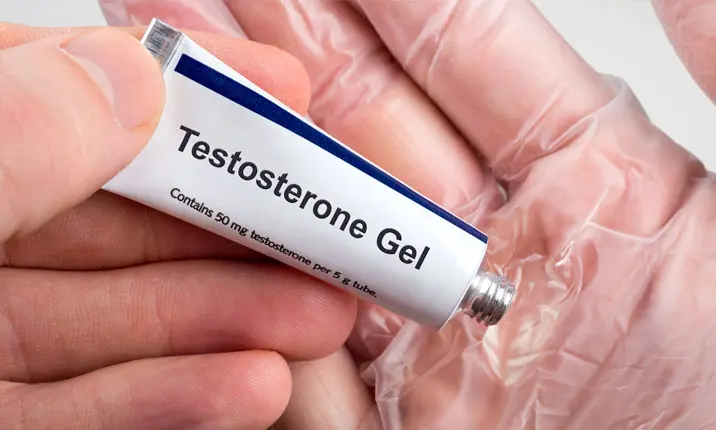-
-
Khu vực chăm sóc và điều trị


Nguồn: Getty Images
How Do You Spot Issues With Your Testosterone Levels?
Cập nhật lần cuối: 30 Tháng Sáu 2022 | 3 phút - Thời gian đọc
Is decreased testosterone something only older men experience? Find out more about the condition, the telltale signs, and what you can do about it.
What is testosterone?
Testosterone is the main sex hormone in men, and it plays an important role in the male body. The development of the male reproductive organs, the development of muscle mass, bone mass and hair growth, prevention of osteoporosis, promotion of health, and well-being of men are all dependent on testosterone.
Testosterone levels typically peak during adolescence and early adulthood, before gradually declining with age. This typically happens from the age of 30 onwards. For older men, a decline in testosterone is a normal effect of aging, but can also be caused by a more sinister condition called testosterone deficiency syndrome.
What is testosterone deficiency syndrome?
Testosterone deficiency syndrome, also known as late-onset hypogonadism, is a medical condition that is characterised by insufficient testosterone activity in the body.
Low testosterone usually occurs in older men, but can happen in men under 30 as well. Low testosterone in younger men can be caused by illnesses such as type 2 diabetes, genetic conditions, and disorders.
What are the symptoms of testosterone deficiency syndrome?
Symptoms of low testosterone include rapid hair loss, loss of libido, infertility, decreased strength and muscle mass, persistent fatigue, a depressed mood, sleep disturbances, low red blood cell count, and decreased bone mass.
Very low testosterone levels are also associated with metabolic syndrome, characterised by increased blood pressure, high blood sugar, high cholesterol, and excess body fat.
It is estimated that about 25% of men aged 45 and above in Singapore suffer from some degree of testosterone deficiency. This is a significant figure, which makes testosterone deficiency syndrome something which men should not ignore.
Screening for low testosterone should be considered if the following symptoms are experienced:
- Physical signs of low testosterone, such as hair loss, reduced muscle mass, increased body fat, gynecomastia (enlargement of breast tissue in men) and small testes
- Decreased libido, decreased frequency of morning erections, erectile dysfunction and a depressed mood
- Laboratory findings of low testosterone such as anaemia and low bone mineral density
- Medication that can affect testosterone production, such as steroids or opioids
- Diseases of the brain in the sellar region
- HIV-associated weight loss
- End-stage kidney disease and dialysis
- Chronic obstructive lung disease
- Infertility
- Osteoporosis
- Type 2 diabetes mellitus
Testing for hypogonadism
Testing can be easily done at a Parkway Shenton clinic through a blood test. Should the result show low testosterone levels, the test should be repeated again to confirm the diagnosis of low testosterone. Further investigative tests will usually be required to determine the cause of the testosterone deficiency.
Treatments for hypogonadism
Testosterone replacement therapy is usually recommended for men with symptoms of testosterone deficiency, and who return consistently with low testosterone levels in their blood tests.
Therapy is usually not recommended if no symptoms are experienced, even if the blood tests show persistently low levels of testosterone. This is because testosterone replacement therapy has potential side-effects.
The main goal of treatment is to restore the testosterone level to the normal range. Testosterone replacement therapy is available in various forms. These include testosterone gels, testosterone patches, oral tablets and intramuscular injections.
Before initiating treatment, your doctor will also screen for medical conditions which will make testosterone replacement therapy unsuitable. These include prostate lumps, raised prostate-specific antigen (PSA) levels, or raised haematocrit (volume percentage of red blood cells in your blood) levels.
Testosterone replacement therapy has multiple benefits. These include improved sexual function, improved physical function, improved executive function, better mood, and improved bone mass.
However, patients on testosterone replacement therapy have to be monitored regularly (usually every 6 months) to see how they are responding to treatment, and if any side-effects are experienced, such as raised haematocrit or PSA levels.
Concerned about your testosterone levels?
Using testosterone replacement therapy to counter declining testosterone levels due to normal aging is not advisable. However, if you suspect that your declining testosterone level is due to a medical condition, it is important to seek your doctor’s advice on treatment. Your doctor will be able to advise you on the suitable tests and treatment options for the condition.
Mayo Foundation for Medical Education and Research. (2020, April 4). Testosterone therapy: potential benefits and risks as you age. Mayo Clinic. Retrieved April 5, 2022, from https://www.mayoclinic.org/healthy-lifestyle/sexual-health/in-depth/testosterone-therapy/art-20045728
Story, C. M. (2018, September 17). Signs of low testosterone in men under 30. Healthline. Retrieved April 5, 2022, from https://www.healthline.com/health/low-testosterone/signs-men-under-30#symptoms
Story, C. M. (2018, September 17). Signs of low testosterone in men under 30. Healthline. Retrieved April 5, 2022, from https://www.healthline.com/health/low-testosterone/signs-men-under-30#symptoms










